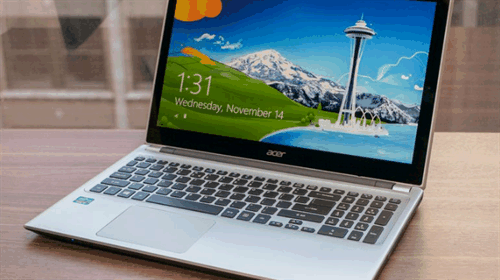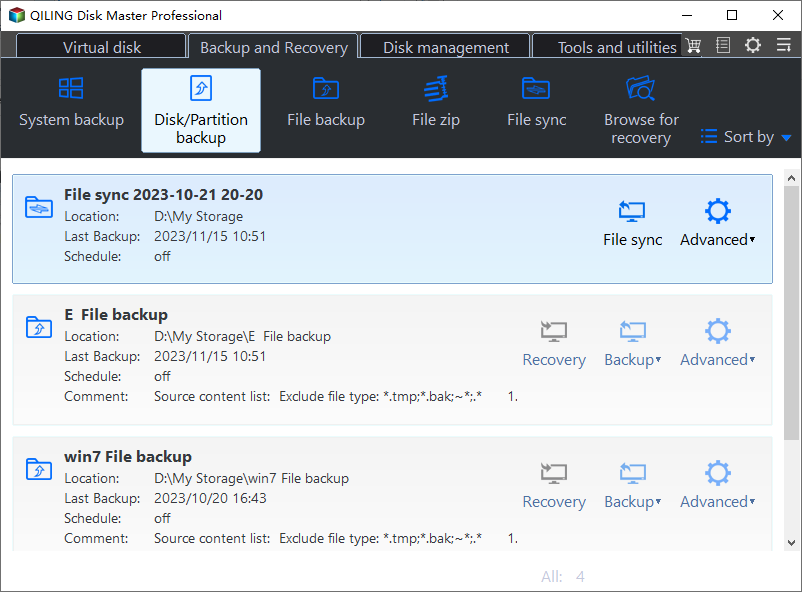How to Upgrade Acer Aspire Laptop to SSD in Windows 10/8/7/XP?
Quick Navigation:
- Why upgrade Acer laptop hard drive?
- How to upgrade Acer Aspire hard drive?
- Upgrade Acer laptop to SSD via Qiling Disk Master
Why upgrade Acer laptop hard drive?
SSDs offer several advantages over traditional HDDs, including high reliability, low power consumption, quiet operation, and low operating temperatures. This has made them a popular choice for upgrading PC hard drives, including those in Acer laptops. In fact, many Acer laptops, such as the Aspire series, are typically configured with HDDs when they are manufactured. However, some manufacturers are starting to incorporate SSDs into their laptops, and users may be interested in upgrading their Acer Aspire One's 120GB HDD or their Aspire V5/R3's 500GB HDD to a faster SSD.
Granted that you don’t have necessity to make Acer laptop upgrade to SSD as your Acer comes with an SSD already, it is better to perform SSD upgrading. Acer new product Aspire S13 was equipped with 128GB SSD and for the majority of PC users, it is far away from enough. As a result, an SSD to SSD migration is unavoidable. Surely, hard drive failure, virus attack, or slow running speed also can lead to Acer laptop SSD upgrade.
How to upgrade Acer Aspire hard drive?
Regardless of whether you're upgrading an Acer Aspire One running Windows 7 or an Acer Aspire S13 running Windows 10, there are certain preparations that need to be made. Before proceeding with the upgrade, you should:
- Before upgrading your Acer laptop, you'll need to replace the current hard drive or SSD with a new one. It's essential to ensure that the new SSD is compatible with your laptop. To verify compatibility, you can contact Acer support for guidance. This will help you choose the correct SSD that meets your laptop's specifications, ensuring a smooth and successful upgrade.
- Before attempting to uninstall the internal hard drive from your laptop, you'll need a Phillips #0/#1 screwdriver. However, it's essential to note that many laptops have a sticker covering the screws, which can be a warranty concern if removed. Therefore, it's crucial to understand the implications of removing this sticker and the potential impact on your laptop's warranty. Before proceeding, take a moment to consider the consequences of your actions and ensure that you're aware of the potential risks involved.
- To transfer all your data to the new storage device, you'll need to use a data transfer software. One option is Qiling Disk Master Professional, which can help you migrate all your data to the new device. Additionally, some SSDs, such as Samsung SSDs, come with built-in data migration software that can simplify the process.
- If you want to transfer your data to a new SSD, you can use a USB drive or CD/DVD disc as a bootable device to connect to your Acer laptop. Since laptops typically have only one disk bay, you can use a SATA to USB cable to connect the new SSD to the laptop, making it possible to migrate your data.
- To create a backup of your current hard drive, you can store the backup image on a network shared folder, a NAS (Network-Attached Storage) device, a USB drive, or an external drive. This will allow you to safely store a copy of your data and ensure that it is not lost in case of a hardware failure or other issue.
While there are several steps involved, the process of backing up and replacing a hard drive is actually quite straightforward. To start, you'll want to backup your existing data, including your operating system and any other important files. If you're looking to reinstall all of your software, you can also backup just the OS. Once you have a backup image, you can store it on a NAS, network shared folder, or external device. After that, you'll need to create a bootable device, which will be used to restore the backup image to the new SSD. Finally, you can replace the internal HDD or SSD with the new SSD and boot the laptop using the bootable device, which will restore the backup image to the new drive.
Upgrade Acer laptop to SSD via Qiling Disk Master
Step1. Download freely, install and launch Qiling Disk Master Professional. Create a full backup of your current HDD with its Disk Backup feature. Remember the location you store backup image to.
Step2. Next, use the software's Create Bootable Media feature to create a bootable CD, DVD, or USB drive. This will allow you to boot from the media and access your system even if the hard drive is not functioning properly. Be sure to remember the location where you store the bootable media.
- Tip: In the event of a system crash, you can create a recovery environment to facilitate system backup and restore operations, as well as other backup and restore tasks. This feature allows you to recover your system and data even when the system is no longer functioning properly.
Step3. To replace the hard drive with a solid-state drive (SSD) on an Acer laptop, follow these steps: First, shut down the laptop completely, then flip it over and remove the battery. Next, use a Phillips screwdriver to unbolt the screws on the rear cover and gently pry it open. Carefully free the HDD frame and replace it with the new SSD. After that, fit the cover back on and secure it with the screws. Finally, reconnect the battery and you're done.
Step4. Insert the bootable media into the Acer laptop and boot it up. Next, connect the external drive containing the backup image, if available. Once you're logged into Windows, you'll find the Qiling Disk Master Professional icon on your desktop. Launch the program and click on the Restore button to proceed.
Step5. Qiling Disk Master will automatically detect the backup image. If the image is stored on a NAS or network, click the Path option to navigate to its location. Then, follow the on-screen wizard to complete the restore process.
Tips: During the restore process, a small window will appear, prompting you to restart your Acer laptop. This is a necessary step to complete the restoration. (Note: I removed the laptop model as it's not necessary to the process)
Upgrading your Acer laptop's SSD may seem daunting, but following the guide step-by-step can make it a relatively straightforward process. The most critical part to focus on is replacing the existing HDD or SSD with the new SSD, as Acer's internal drive design can be more challenging to access than other laptops.
The Qiling Disk Master Professional software proved to be a valuable tool not only for upgrading your Acer Aspire's SSD, but also for data protection. It's a wise decision to keep it installed on your laptop, as it offers a range of backup and recovery features, including system backup, disk backup, and file backup. Additionally, its Universal Restore feature allows you to restore Windows 10 backups to different hardware, its File Sync feature enables you to Universal Restore feature; to transfer files between your laptop and desktop, and its ability to clone bootable USB drives can be useful in various situations.
Related Articles
- Cyberpunk 2077 Save File Location (2023 Thorough Guide)
Welcome, Cyberpunk players! Wondering where your Cyberpunk 2077 save files are located? Check out this article to learn where to find the Cyberpunk 2077 save file location on your Windows, Mac, and Linux systems. And learn how to transfer and back up Cyberpunk files securely. - 4 Proven Ways to Fix Erase Process Has Failed on Mac
Here is the complete guide on how to fix erase process that has failed on Mac. Follow the steps below to fix this error. Besides, if you lose data during the process, run Qiling Mac data recovery software to get help. - Best Method | Install macOS Monterey on Unsupported Mac
Are you feeling perplexed about learning how to install MacOS Monterey on Unsupported Mac because it seems like a techy job? We have got your back. - How to Fix Mac Stuck on Loading Screen [6 Straightforward Methods]
In case your MacBook Air or Pro gets stuck on the loading screen, you may try the top 6 solutions to restore a frozen Mac. This article will also guide you to recover the data in case it's lost while fixing this error.


